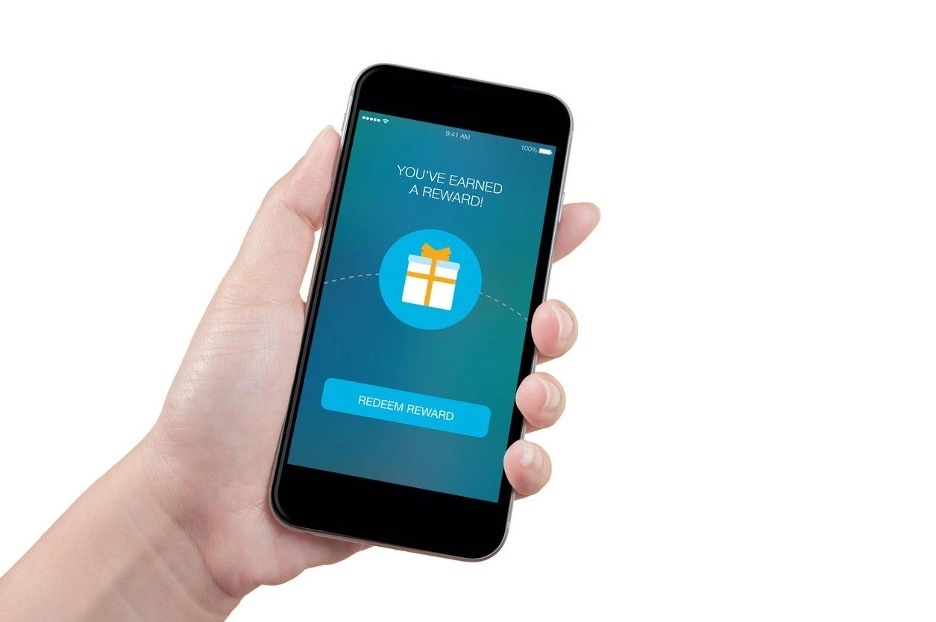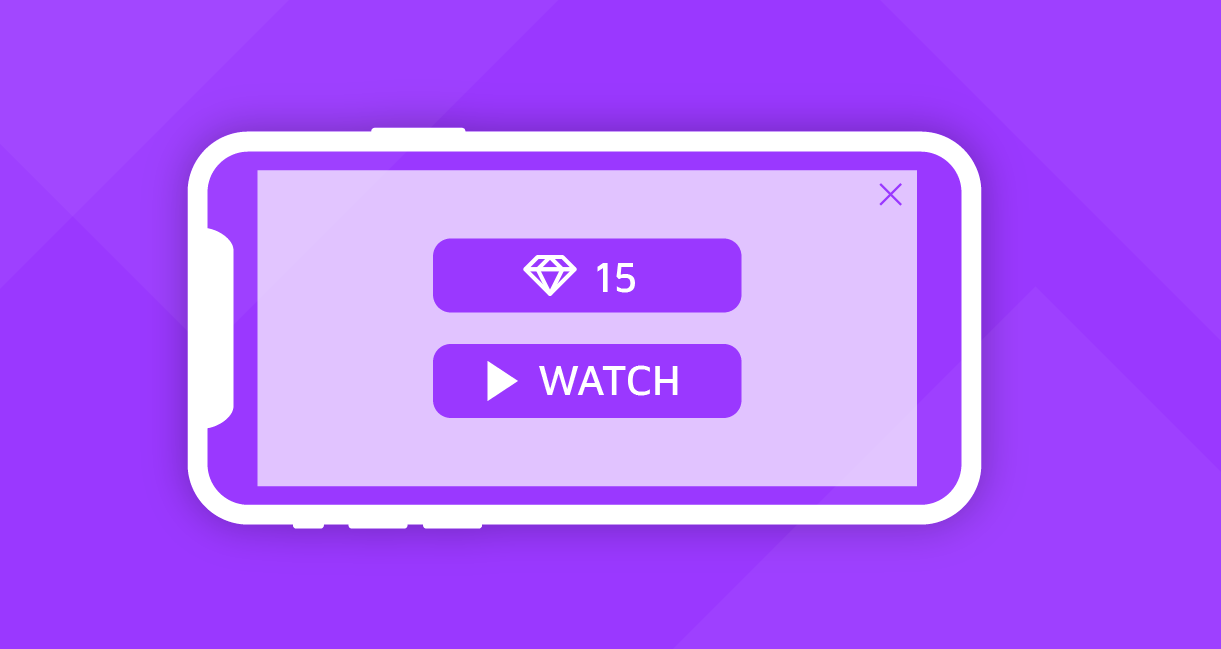11 Ways To Make Rewarded Videos For In-App Revenue More Appealing To Users
If you’re looking for ways to keep users consistently engaged with your app and maximize retention, rewarded video ads are a great way to do so. Rewarded videos enable users to receive certain in-app rewards by viewing a short video ad for a set amount of time. Depending on the reward and the types of ads used, users may eagerly jump into rewarded campaigns and continue using apps for long periods, making these campaigns ideal for increasing loyalty.
However, you might already be using rewarded videos and not seeing the results you anticipated. In these cases, there are some strategies to implement that can help you optimize rewarded campaigns to yield better results. Here we’ll go over some of the best practices that will help you get the most from your efforts.
1. Allow Users to Opt-in to View Ads
The most important aspect to consider with rewarded videos is the ability for users to opt into them. If you force users to watch rewarded videos, they won’t be as receptive to them and may find them to be a mere annoyance. Make sure your app gives users the choice to view ads or continue using the app without them. With the right incentive, you’ll be able to encourage more users to opt-in and voluntarily view more ads.
2. Make Ads Easy to Access and Optimize Placement
If you offer rewards through rewarded videos, make sure you include ad buttons that are clear and make it easy for users to access them. People shouldn’t be confused when they encounter a chance to earn a reward, as this can quickly deter them from using your app again. You can use certain motion effects, text displays, and strategic color schemes to ensure ad buttons are easy to locate.
Additionally, make sure the placement of your ads is ideal to make sure they’re easily found and unobtrusive. When selecting the right placement for your ads, think about what your users want to see and experience when using your app. For example, in a gaming app, it’s best to avoid placing ads before a crucial moment in the middle of a gaming session. Instead, use interstitial ads or give users the option to view an ad to add another life or obtain a similar last-minute reward.
A couple of the best places for rewarded videos include your app’s home screen and a dedicated offerwall in your app store.
3. Don’t Compromise the User Experience
Rewarded ads should enhance the user experience, not detract from it. Make sure your rewarded videos supplement the core experience and make the UX your primary focus. People should enjoy the main features that your app has to offer them, which will then make them want to engage with your rewarded campaign to benefit even more from those features. Placing ads in the right spot and offering the right balance of rewards can then enable users to get the most from the free experience you offer, potentially leading them to make in-app purchases or buy a premium version of your app.

4. Be Clear About the Rewards Given
You can allow a degree of mystery with rewards, but don’t conceal them entirely. If people don’t at least have an idea of what they’re going to get when viewing rewarded videos, they’ll be less inclined to opt-in. You can use text or images to establish what rewarded videos will provide. For example, you can use messages such as “view to add another life,” “watch a video to multiply [currency],” or other similar messages. In some cases, you can simply use icons and numbers to indicate what a reward will be, such as “[coin icon] x 2” to indicate the doubling of currency. If you want to leave the reward a mystery, you can at least indicate that it’s an unpredictable reward by using a question mark icon or something similar, which could entice users if those mystery rewards are worth the ad view.
5. Test Different Rewards
When pinpointing the right reward to get people to view rewarded videos, you need to perform some tests. By testing different types of incentives, you can figure out what people want to see from these campaigns, which will help maximize the ROI of these campaigns.
Be sure to test both the type of reward you offer and the quantity. You can do so by using A/B split testing to try different types or amounts. For instance, you can run one test using two different types of rewards, such as 2,000 vs 2,500 of your in-game currency. You may also want to test two types of free items that people can earn. Based on which item or quantity performs best while still keeping your app profitable, you can determine which rewards to keep in place. Through repeated testing, you can optimize your campaigns to maximize engagement and ROI.
6. Choose the Best Frequency for Ads
The right frequency of ads will also make a big difference in engagement levels. People should be able to view ads frequently to keep them engaged, but you also need to set a frequency cap to make sure that people aren’t exploiting ads to gain an infinite number of free rewards.
For example, you might allow people to receive a reward five times by viewing an ad five times per day, with the button locked out after the user has reached this limit. However, you can get users excited to re-engage with the app the next day by putting a timer in place that counts down to the next day when people will be able to access this reward again. This will make it clear what users can expect and help increase retention with the promise of repeat rewards.
7. Be Strategic With Rewards
Make sure your ads are consistently satisfying to get users to continue using your app. This means giving real value to your users with rewards that they can actually put to use to continue enjoying the app for free. On the other hand, you need to be strategic enough to reward users satisfactorily without compromising your app’s monetization.
The best practice here is to offer items in your store that are somewhat difficult to obtain, but which users can acquire with sufficient in-app currency. As an example, you could reward players with a certain amount of currency that users can save to spend on a larger item later, which serves as an even bigger reward.
To figure out which rewards to offer while maintaining profitability, calculate your rewards’ cost per thousand/Mille (CPM) and the total cost. This will help you determine which rewards help your bottom line while increasing retention, making them worth offering.
8. Offer Unexpected Rewards
As discussed, it’s sometimes good to offer unexpected rewards, but ensure that users know they’re intentionally mysterious. One of the most effective ways to provide users with mystery rewards is to present them with the option to view a video to open a treasure chest containing multiple small rewards together. This offers some variety and is often enticing if your app features multiple types of items. You can also offer different tiers of treasure chests, with each tier requiring users to watch more ads before opening them.
Your bottom tier, for example, might include a few different types of key items in small quantities, requiring viewers to watch a single ad to open them. Meanwhile, the second tier offers a wider variety of mystery items in larger quantities, requiring three ad views. Finally, the most valuable treasure chest could require even more views to unlock larger quantities or an even larger selection of items.
For particularly large mystery rewards, you can also tie them into ad engagement frequency by only giving users a limited number of ads they can watch per day to contribute toward the reward. An example of this would be a large treasure chest full of valuable items that users need to watch as many as 20 ads or more to open. You can then set a limit of five ad views per day, which will encourage users to come back each day to view more ads until they’ve finally unlocked this reward. Just remember to make it worthwhile to encourage users to repeat this experience.
9. Offer In-Game Hints as Rewards
If users can benefit from hints that you give them in a game, this can be a great incentive for a rewarded campaign. These hints could include parts of an answer or clues for puzzle games, or you can offer certain tips and tricks for other types of games if users experience certain challenges while playing. For the latter example, it may be best to offer assistance only after a player has lost a level a certain number of times, which can help them progress without making them feel like the app is holding their hand through the game.

10. Segment App Users
To help further optimize your rewarded ads, you should segment your users. This entails dividing your main audience into multiple target audiences with unique wants and needs. You can use this strategy for rewarded campaigns just as you would for mobile marketing efforts.
When segmenting for rewarded ads, segment users according to how often they access your app. If users frequently use your app on a weekly or daily basis, you may want to offer them rewards that are of lower value due to the likelihood that they’ll continue using your app regardless. You can offer these audiences certain boosts that improve upon what they currently possess in the game, which you could use to enhance purchased items in an attempt to encourage them to make more purchases.
Meanwhile, you can offer larger rewards to users who don’t spend as much time on your app to help bring them back and increase engagement. These rewards could also entice these users and give them an incentive to make more in-app purchases.
11. Keep Ads Consistently Relevant
Great and frequent rewards can get many people to watch all the way through an ad, but another key to your campaigns’ success is ad relevance. If your ads are in a completely unrelated app category that your users don’t care about, they’ll likely have far less patience to actually watch ads to completion. To make sure your ads are as interesting as the rewards received after watching them, keep your ads relevant to your app. You can easily achieve this without including ads for direct competitors.
For example, if your app is a puzzle game, you might use ads that advertise other types of puzzle games that use different mechanics from yours. You can also display ads that are in an adjacent category, such as travel ads for an educational app with audiences who might be interested in studying abroad. As a result, your audiences will find more value in your ads that make viewing them less of a hassle that might otherwise make them reluctant to view them.
Develop Winning Rewarded Campaigns With the Right Strategy
By taking all of these steps, you can make sure that your rewarded campaign is ready to succeed. If you find that your campaigns are struggling to get the kind of results you need to see from them, going back to these points and touching on them can help identify the specific issue affecting your app. You’ll then be able to continue optimizing these campaigns until they perform the way they should. Combined with other strategies that enhance your app’s user experience, you’ll be able to attract more users and keep them engaged on a regular basis. In the end, you’ll drive more retention as users find your app valuable and worth using.
___
by akbar
source: AppSamurai
